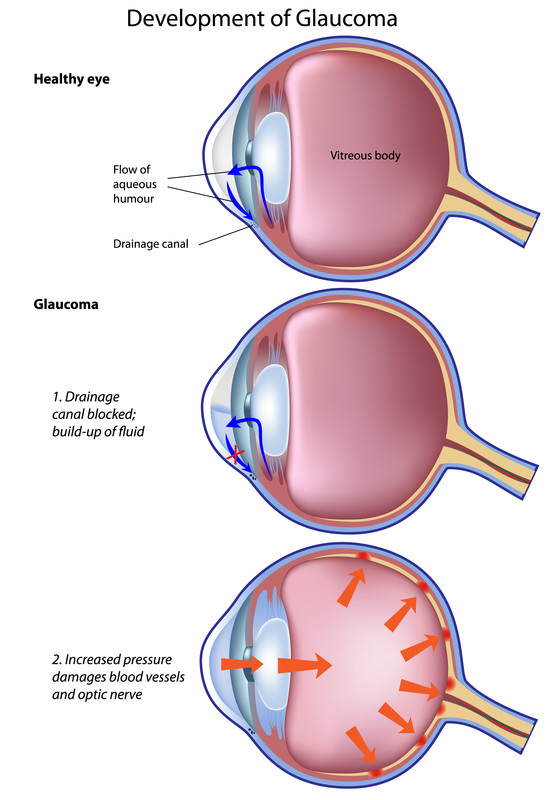In a normal eye there is a constant flow of fluid (aqueous humor)
from the inner chamber to the outer chamber.
This fluid is free to drain out of the eye, through the drainage channels
(Canal of Schlemm) at the outer edge of the iris, and return to the veins.
With Glaucoma, the drainage channels are restricted or blocked.
Recognizing the Symptoms
The most common form of Glaucoma, Open Angle, starts gradually and gives no warning symptoms, until a very late stage, when much irreversible damage has been done to the field of vision.
Without treatment it can progress to complete blindness.
A much less common form of Glaucoma, Acute Closed Angle, starts with severe pain in the eye, headache, blurring of vision, halos around sources of light, and darkening at the outer edges of your sight (Peripheral Vision).
This needs immediate treatment.
Where pressure is normal within the eye, vision is clear right to the edges of the field of view.
Increased pressure may lead to darkening at the edges of the field of view (tunnel vision).
How is glaucoma treated?
As a rule, damage caused by glaucoma cannot be reversed. Eyedrops, laser surgery, and surgery in the operating room are used to help prevent further damage, in some cases, oral medications may also be prescribed. With any type of glaucoma, periodic examinations are very important to prevent vision loss. Because glaucoma can progress without your knowledge, adjustments to your treatment may be necessary from time to time.
Who is at risk for glaucoma?
Your ophthalmologist considers many kinds of information to determine your risk for developing the disease.The most important risk factors include:
age;
elevated eye pressure;
family history of glaucoma;
African or Spanish ancestry;
farsightedness or nearsightedness;
past eye injuries;
thinner central corneal thickness;
systemic health problems, including diabetes, migraine headaches, and poor circulation. Your ophthalmologist will weigh all of these factors before deciding whether you need treatment for glaucoma, or whether you should be monitored closely as a glaucoma suspect. This means your risk of developing glaucoma is higher than normal, and you need to have regular examinations to detect the early signs of damage to the optic nerve.




